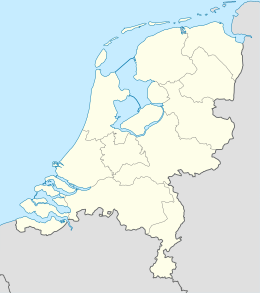로랑 사가르트
Laurent SagartLaurent Sagart(프랑스어: [sa'gaʁ]; 1951년 출생)는 CNRS(Centre National de la Recherche Scientifique, CNRS)의 L'Asie Orientale(CRLAO - UMR 8563) 유닛의 수석 연구자다.[1]
전기
1951년 파리에서 태어난 그는 1977년 파리 7대학에서[3] 박사학위를, 1990년 아이크스마르세유 1대학에서 박사학위를 받았다.[2][4] 그의 초기 작품은 중국 방언학에 초점을 맞췄다. 그리고 나서 그는 단어 뿌리와 붙임새를 구분하는 구 중국어의 재구성을 시도하면서 올드 중국어로 관심을 돌렸다.[5] 그의 최근 작품은 윌리엄 H. 백스터와 협력하여 고대 중국어를 재구성한 것으로, 초기 학문을 바탕으로 한 것으로서, 또한 보수적인 중국 방언(민, 왁시앙)에서의 음운론적 차이와 베트남어, 흐몽미엔에 대한 중국어의 초기 계층을 고려하였다. 타이카다이.[6] 온라인에는 4000여자의 한자 재구성이 게재됐다.[7] 그들의 2014년 책은 미국 언어학회의 블룸필드 상을 받았다.[8]
중오스트로네시아어
사가트는 중오스트로네시아어족 제안으로 유명하다. 그는 오스트로네시아어를 중-티베타어족과 관련이 있다고 생각하고 있으며,[9] 타이-카다이어를 오스트로네시아어족 내의 말레이-폴리네시아어족과 자매 집단으로 취급하기도 한다.
인도유럽어
로랑 사가르트도 인도유럽 연구에 기여했다. 그는 우유 소화 능력이 인도-유럽 확장에 중요한 역할을 했다는 제안(Garnier et al. 2017)을 공동 저술했고, 인도-유럽 연구(Pellard et al. 2018)와 관련한 프랑스 학계의 논란에 참여했다.
중-티베탄 언어 계열의 기원
Along with numerous researchers such as Valentin Thouzeau, Robin J. Ryder, Simon J. Greenhill, Johann-Mattis List, Guillaume Jacques and Yunfan Lai, Sagart conclude in a study published in the Proceedings of the National Academy of Sciences of the United States of America that the Sino-Tibetan languages originated among millet farmers, located in N약 7,200년 전에 중국을 통치했다.[10][11]
선택한 작품
- Sagart, Laurent (1982). "A List of Sung Him Tong Hakka words of dubious etymology". Cahiers de Linguistique Asie Orientale. 11 (2): 69–86. doi:10.3406/clao.1982.1116. ISSN 0153-3320.
- Sagart, Laurent (1993). "Chinese and Austronesian: Evidence for a Genetic Relationship". Journal of Chinese Linguistics. 21 (1): 1–63.
- Sagart, Laurent (1994). "Proto-Austronesian and Old Chinese Evidence for Sino-Austronesian". Oceanic Linguistics. 33 (2): 271–308. doi:10.2307/3623130. JSTOR 3623130.
- Sagart, Laurent; Baxter, William H. (1997). "Word Formation in Old Chinese". In Packard, Jerome L. (ed.). New Approaches to Chinese Word Formation. Perspectives in Analytical Linguistics. 105.
- Sagart, Laurent (1999). The Roots of Old Chinese. Current Issues in Linguistic Theory. 184. Amsterdam: John Benjamins Publishing.
- Sagart, Laurent (2004). "The Higher Phylogeny of Austronesian and the Position of Tai-Kadai" (PDF). Oceanic Linguistics. 43 (2): 411–44. doi:10.1353/ol.2005.0012. S2CID 49547647.
- 샤 지아 沙尔[Laurent Sagart]와 바이 예팽 白一平[윌리엄 H. Baxter]. 2010. Shànggǔ Hànyǔ de N- hé m- qiánzhuì 上古汉语的 N- 和 m- 前缀. Hahn-Zaang yzà xu [[Journal of Chinna-Tibetan 언어학] 4. 62–69.
- Sagart, Laurent; Baxter, William H. (2014). Old Chinese: A New Reconstruction. Oxford: Oxford University Press.
- Garnier, Romain; Sagart, Laurent; Sagot, Benoît (2017). "Milk and the Indo-Europeans". In Robbeets, Martine; Savelyev, Alexander (eds.). Language Dispersal Beyond Farming. pp. 291–311. doi:10.1075/z.215. hdl:11858/00-001M-0000-002E-910A-0. ISBN 978-90-272-1255-9. S2CID 135078791.
- Pellard, Thomas; Jacques, Guillaume; Sagart, Laurent (2018). "L'indo-européen n'est pas un mythe". Bulletin de la Société de Linguistique de Paris. 113 (1): 79–102. doi:10.2143/BSL.113.1.3285465.[12]
- Sagart, Laurent; Jacques, Guillaume; Lai, Yunfan; Ryder, Robin; Thouzeau, Valentin; Greenhill, Simon J.; List, Johann-Mattis (2019). "Dated language phylogenies shed light on the ancestry of Sino-Tibetan". Proceedings of the National Academy of Sciences of the United States of America. 116 (21): 10317–10322. doi:10.1073/pnas.1817972116. PMC 6534992. PMID 31061123.
참조
- ^ "Laurent Sagart". Centre de recherches linguistiques sur l'Asie orientale. Archived from the original on 2013-10-14. Retrieved 2013-11-14.
- ^ "Interview with Laurent Sagart". Archives Audiovisuelles de la Recherche (in French). Archived from the original on 2015-04-14. Retrieved 2013-11-14.
- ^ 사가르트, L. (1982) 포놀로그 뒤 방언 하카 드 성 힘 통. 파리: 랭가즈 크로아제 153펜스.
- ^ Sagart, L. (1993) Les 사투리 gan. 파리: 랭가즈 크로이제 285 페이지
- ^ 사가트, L. (1999년) 옛 중국인의 뿌리. 언어이론의 시사점, 184. 암스테르담: 존 벤자민
- ^ 백스터, 윌리엄 H, 로랑 사가르트(2014년). 옛 중국어: 신재건. 옥스퍼드: 옥스퍼드 대학 출판부
- ^ Baxter, W; Sagart, L, Baxter-Sagart Old Chinese reconstruction (v. 1.00), archived from the original on 2011-08-14, retrieved 2012-12-11
- ^ "Old Chinese: A New Reconstruction wins Bloomfield Book Award".
- ^ 사가르트, L. (2005) 중국-티베탄-오스트로네시아어: 갱신되고 개선된 주장. L. Sagart, R. Blench, A. 산체스-마자스 (eds) 동아시아 주민: 고고학, 언어학, 유전학을 합치면 161–176. 런던: RoutregeCurzon.
- ^ Laurent Sagart; Guillaume Jacques; Yunfan Lai; Robin J. Ryder; Valentin Thouzeau; Simon J. Greenhill; Johann-Mattis List (May 2019). "Dated language phylogenies shed light on the ancestry of Sino-Tibetan". Proceedings of the National Academy of Sciences. 116 (21): 10317–10322. doi:10.1073/pnas.1817972116. PMC 6534992. PMID 31061123.
- ^ "Origin of Sino-Tibetan language family revealed by new research". ScienceDaily. May 6, 2019. Retrieved 16 May 2021.
- ^ Pellard, Thomas; Sagart, Laurent; Jacques, Guillaume (2018). "L'Indo-européen n'est pas un mythe". Bulletin de la Société de Linguistique de Paris. 113 (1): 79–102. doi:10.2143/BSL.113.1.3285465.
